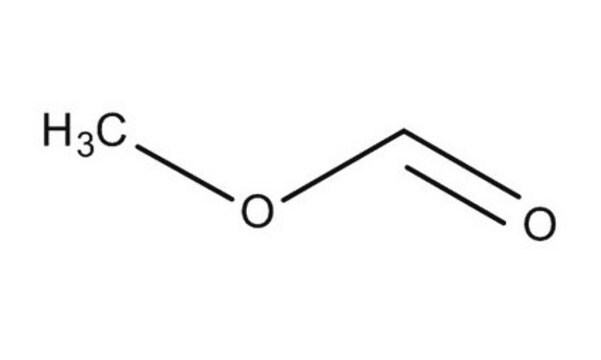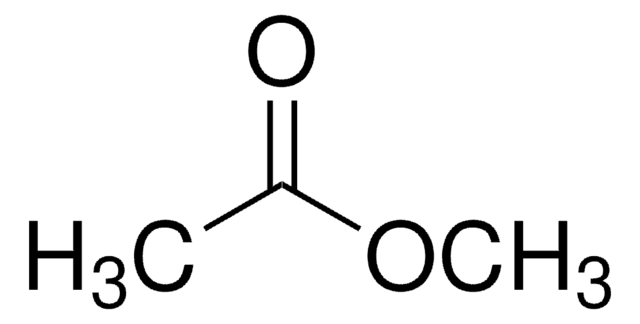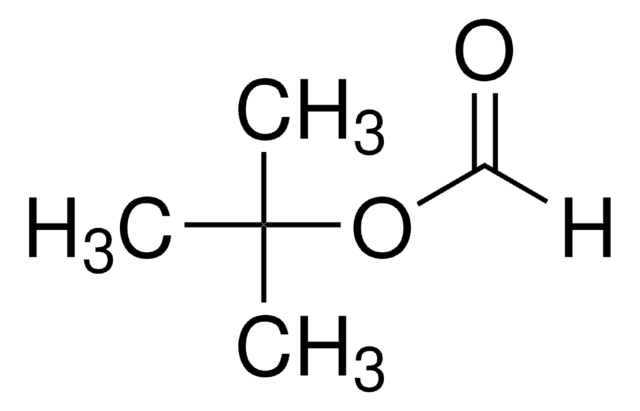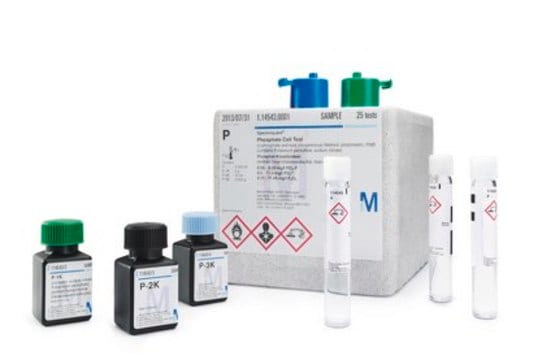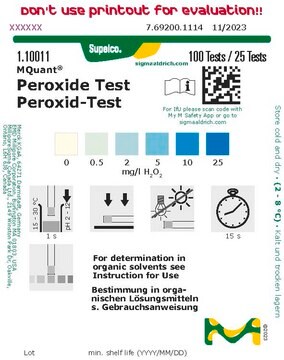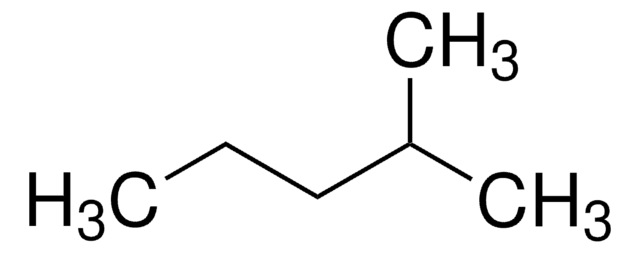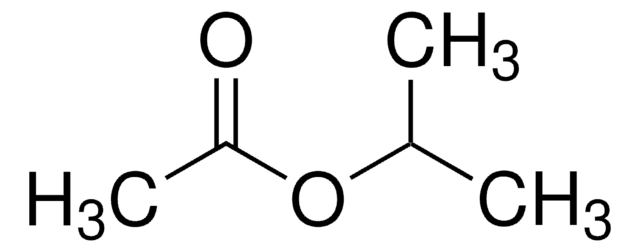Kluczowe dokumenty
06547
Methyl formate
analytical standard
Synonim(y):
Formic acid methyl ester
About This Item
Polecane produkty
klasa czystości
analytical standard
Poziom jakości
gęstość pary
2.1 (vs air)
Próba
≥99.8% (GC)
temp. samozapłonu
842 °F
okres trwałości
limited shelf life, expiry date on the label
granice wybuchowości
23 %
współczynnik refrakcji
n20/D 1.343 (lit.)
n20/D 1.344
bp
32-34 °C (lit.)
mp
−100 °C (lit.)
gęstość
0.974 g/mL at 20 °C (lit.)
Zastosowanie
cleaning products
cosmetics
flavors and fragrances
food and beverages
personal care
Format
neat
ciąg SMILES
[H]C(=O)OC
InChI
1S/C2H4O2/c1-4-2-3/h2H,1H3
Klucz InChI
TZIHFWKZFHZASV-UHFFFAOYSA-N
Szukasz podobnych produktów? Odwiedź Przewodnik dotyczący porównywania produktów
Opis ogólny
Zastosowanie
- krwi i moczu metodą chromatografii gazowej ze spektrometrią mas z ekstrakcją w komorze nadpowierzchniowej (HS-ITEX-GC-MS)
- brazylijskiego spirytusu z trzciny cukrowej metodą chromatografii gazowej wysokiej rozdzielczości (HRGC)
- farmaceutyczne substancje pomocnicze przy użyciu HS-GC-MS działającego w trybie skanowania i monitorowania wybranych jonów (SIM)
Polecane produkty
Hasło ostrzegawcze
Danger
Zwroty wskazujące rodzaj zagrożenia
Zwroty wskazujące środki ostrożności
Klasyfikacja zagrożeń
Acute Tox. 3 Dermal - Acute Tox. 3 Inhalation - Acute Tox. 3 Oral - Eye Irrit. 2 - Flam. Liq. 1 - STOT SE 1 - STOT SE 3
Organy docelowe
Respiratory system
Kod klasy składowania
3 - Flammable liquids
Klasa zagrożenia wodnego (WGK)
WGK 2
Temperatura zapłonu (°F)
-2.2 °F - closed cup
Temperatura zapłonu (°C)
-19 °C - closed cup
Środki ochrony indywidualnej
Eyeshields, Faceshields, Gloves
Wybierz jedną z najnowszych wersji:
Certyfikaty analizy (CoA)
Nie widzisz odpowiedniej wersji?
Jeśli potrzebujesz konkretnej wersji, możesz wyszukać konkretny certyfikat według numeru partii lub serii.
Masz już ten produkt?
Dokumenty związane z niedawno zakupionymi produktami zostały zamieszczone w Bibliotece dokumentów.
Klienci oglądali również te produkty
Nasz zespół naukowców ma doświadczenie we wszystkich obszarach badań, w tym w naukach przyrodniczych, materiałoznawstwie, syntezie chemicznej, chromatografii, analityce i wielu innych dziedzinach.
Skontaktuj się z zespołem ds. pomocy technicznej
